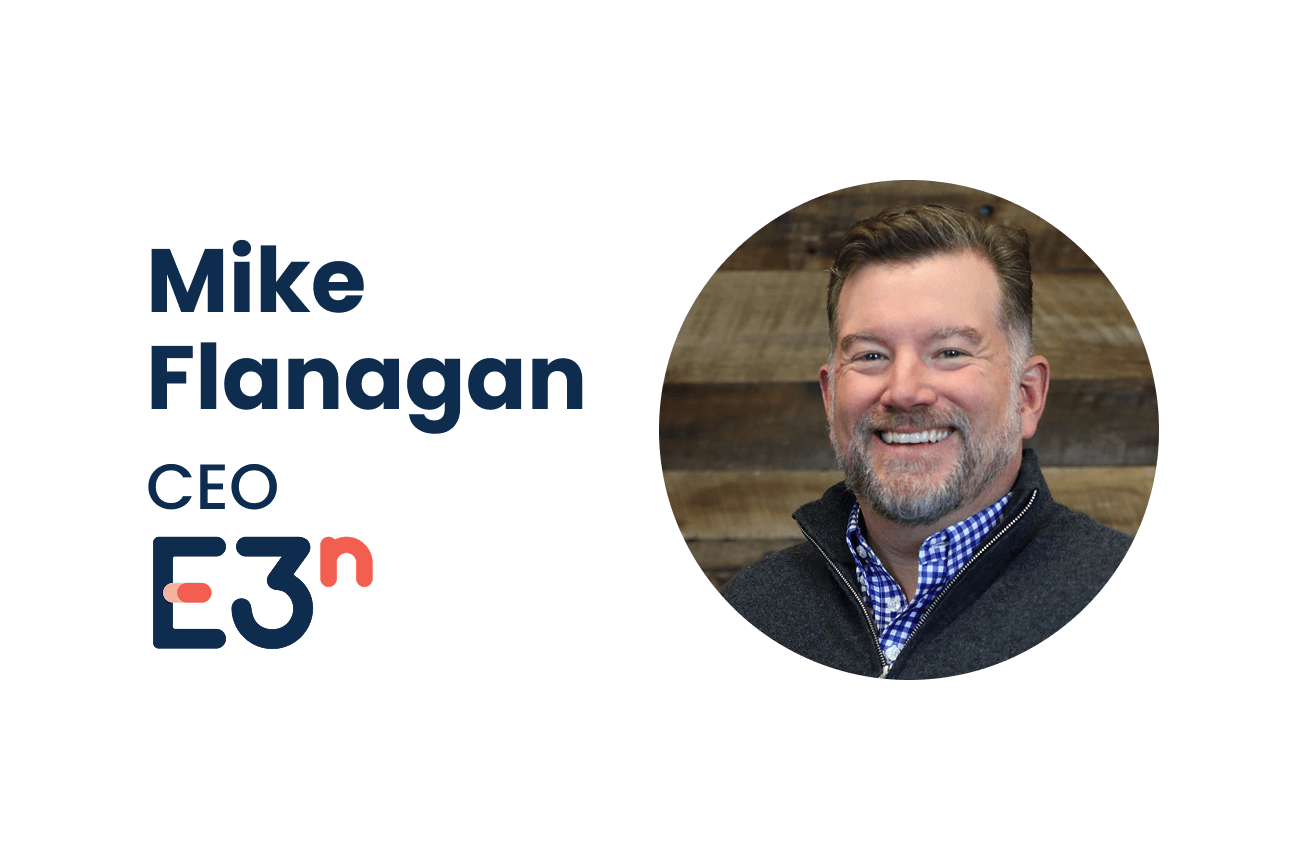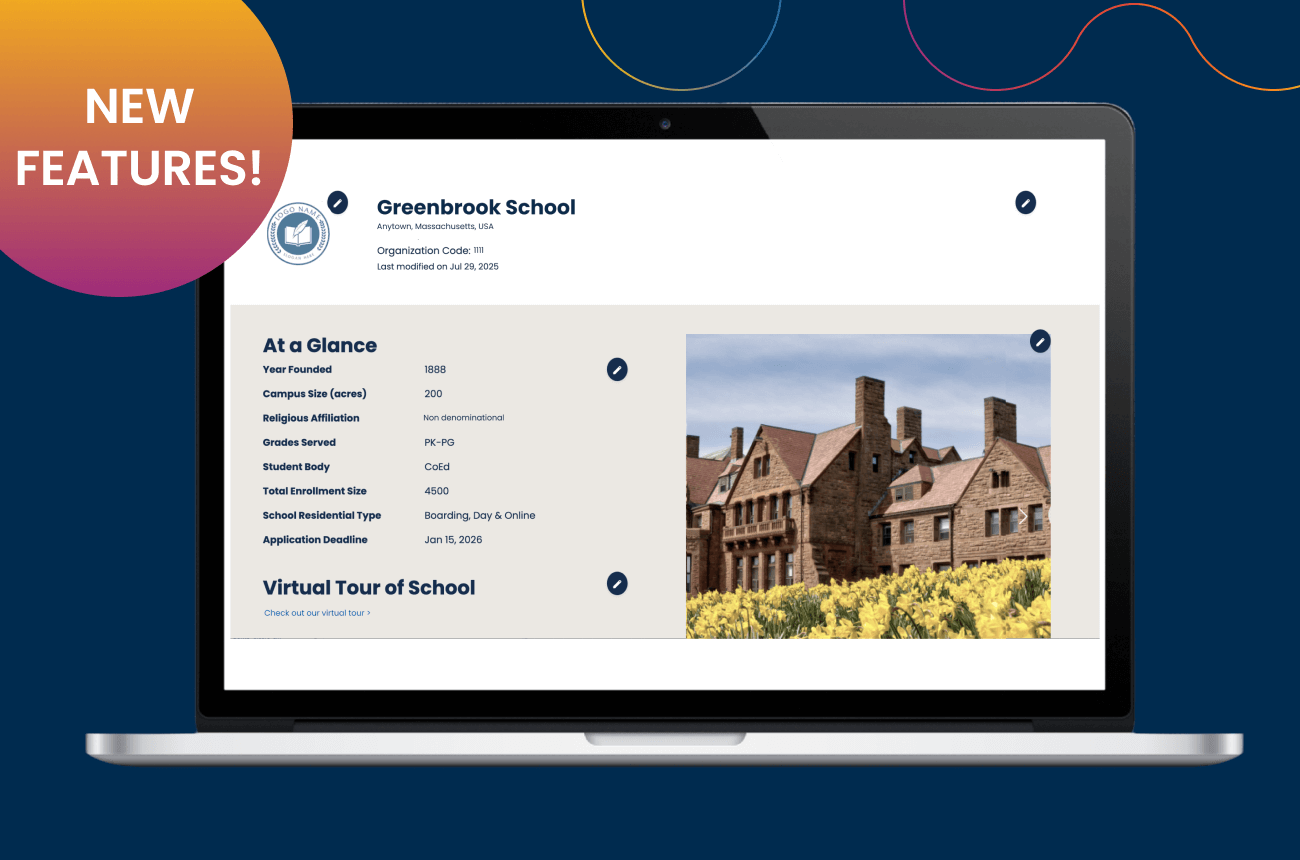An Interview with Sheila Miklos

The Yield checked in with Sheila Miklos, vice president of market growth for The Association of Boarding Schools (TABS) and deputy managing director for the North American Boarding Schools Initiative (NABI), to talk about the initiative and provide some helpful insights to schools on the best places to focus their marketing energies.
Tell us about yourself and your background.
My background includes 20+ years of digital marketing for consumer brands, primarily with a data-driven approach to producing measurable results. I’m passionate about leveraging the knowledge we glean from analytics to make better decisions. I have had the amazing opportunity to own three marketing analytics agencies and have worked with some of the best minds in digital from a company and client perspective.
Can you explain what NABI is, for those unfamiliar with it, and describe your role?
NABI is a significant effort to address a challenge initially brought forth by TABS member schools. In a nutshell, it’s a five-year, multi-million-dollar initiative aimed at increasing North American high- and full-pay boarding enrollment by 10% by 2020. This will be achieved through a mix of digital marketing strategies, engagement with key influencer populations, and ultimately a lot of work geared at increasing awareness of boarding school as an educational option.
The number of North American high- and full-pay boarding students in our member schools has seen a substantial decline over the last decade. This is the first effort of this type and magnitude to develop a comprehensive plan to address this issue. Our goal is to reach new tuition-capable families and start a conversation. We marked the start of year two of the campaign on July 1, 2017, and today we have 212 participating schools (and counting!) in the U.S. and Canada. All member schools invest in the initiative, and we in turn provide exceptional creative resources to our schools to help them market themselves.
My role at TABS encompasses all aspects of marketing and analytics—from developing and executing a comprehensive digital strategy, to deploying marketing automation platforms to manage our data and communicate with consumers, to creating predictive analytic models so that we can help our member schools deepen their understanding of prospective families.
As a marketing professional from outside independent schools, what are your impressions of how independent schools market themselves? What are they doing well and not so well?
My general impression is that many independent schools would benefit from clearly communicating what their “more” is for families and students alike. All of our boarding and day schools have stellar academics, interesting specialty programming, and enormously dedicated faculty. And, frankly, so do many other schools these days. So, why your school? Crystallizing what makes a school compelling—the differentiators of their programming, the immersive experience, the 24/7 faculty support, the spirit of traditions—should be unequivocally communicated to parents and students who are looking for more. We coach our schools to showcase their distinctive attributes and tell their stories in more specific terms.
This spring, you did extensive market research with parents on boarding school awareness and perception. What were the key findings? Are there lessons about parent motivation and/or perceptions of independent schools that are applicable to all schools, not just boarding?
We’ll continue our consumer research throughout this five-year initiative, as learning about and listening to these target consumers is critical to our success. We learned that among the more affluent households in Canada and the U.S., boarding schools are not top of mind as a pre-college educational option, as just 2% cited it unaided. We also learned that students are the biggest driver in decisions about considering boarding school. Our research showed that 54% of parents who were specifically asked by their children to consider boarding school would do so—despite previous reservations. We learned that parents do engage with branded (NABI) ads, despite their initial feedback indicating that they would not. I think every school can learn from these key takeaways. We test and learn with every campaign flight. We listen and then watch what our visitors do online. It’s fascinating and continually shapes our creative messaging.
You’ve been spending a lot of time helping your member schools better understand their web analytics. What does that entail? What key questions can schools answer by knowing how to mine these data?
NABI is a significant investment for all of our schools, and while we are producing valuable research, web, video, and social content on a daily basis and building the boarding school brand, the NABI team is laser-focused on creating as much value for our schools as we possibly can. I’ve worked with Google Analytics since its inception, so teaching our schools how to use this powerful tool is really fun for me. I also conduct a usability audit, so that schools can better understand their users’ experience. The marketing and communications teams at schools then feel more confident understanding where their web traffic is coming from on a regional and national level; which referring sources are sending leads; what page content is popularly consumed; and specific visitor conversions like watching videos, downloading application materials, and registering for open houses, for starters. They learn what’s working well and not so well. An environment where we all can get just a little more comfortable understanding and making improvements based on actionable data is always a good thing!
The majority of independent school admission offices do not have deep pockets when it comes to their marketing budgets. Where would you tell schools to focus limited marketing resources and why?
Hands down, I would say website management and social media. First, I’d advise schools to give their websites some serious attention. We know a majority of students learn about boarding schools through word-of-mouth, so websites are a crucial first impression. Shop your website as a consumer would who knows nothing about you—or about private school, for that matter. Your site should continually be updated for both consumers and search engines. It’s the gateway to your school, and should put content for prospective families front and center in everyday language. Consumers expect to readily see information on critical things like applying, the admission process, and open houses. Click on all your links and make sure they lead to the right content. Be brutally honest about the quality of your videos and images. If they are outdated or low-resolution, update them. In the age of Amazon, consumers have learned to expect flawless online experiences.
Second, choose one or two social media channels and commit to making them strong. Rather than trying to use every social media channel available, understand where your audience(s) live and focus on those channels (you’ll learn your best-performing social channels when you review your Google Analytics data). Dedicate resources to each channel for content development and build those audiences before moving on to a new channel. Instagram and Snapchat are trusted channels where students are actively engaging (for example, our research shows that Canadian teens use Snapchat six times more than U.S. kids), so if you’ve already nailed Facebook and YouTube, try your hand at these newer visually-based platforms.
We are hearing and reading a lot about the millennial generation. Do you have any information or insights to share about engaging millennials?
In 2017, millennials are people between 20-36 and Gen X’ers are aged 37-52. While both are important groups, our target market includes just the upper limits of the millennial group, as potential parents of junior (middle school) students. Gen X’ers are definitely part of our prospective parent market. We find that the key to garnering the attention of both groups is to debunk myths they may believe about boarding school and to share our research about immersive education. Differentiators include how time is spent after classes, the quality of life without constant commuting to after-school obligations, and the tight-knit community boarding school provides. Helping families solve their immediate problem of finding the right fit for their child and illustrating outcomes in ways that are authentic have proven to work well.
The Enrollment Management Association is working with TABS/NABI to help remove application hurdles for families using the Standard Application Online (SAO). In what other ways is NABI working to expand the market?
NABI provides a two-pronged approach to considering educational options. As we market boarding school at a national level, this allows each of our member schools to market themselves in a more robust way—armed with all of the creative assets we’re developing. Thinking of the national campaign as “Why Boarding?” it translates at the school level to "Why Our School?" We are working hard to reach the 200,000-250,000 families in North America who have never considered boarding school for their children. So, we are expanding the concentric circles of the market across the U.S. and Canada, especially in areas where families do not have a culture of boarding school, but certainly have the means to afford it.
Beyond the numbers, what will the success of the NABI initiative look like/feel like?
That’s a great question. Admittedly, my role focuses heavily on key performance indicators like application and enrollment increases, but there are other successes we will be able to point to. One is helping member schools amplify their distinctive features on a monthly basis with an intentional, strategic social media campaign featuring content from our coed, all-girl, all-boy, junior boarding, learning difference, and military schools. Another success will be changing the conversation by countering the negative perceptions we know exist by sharing positive stories of transformation.
Our research last fall showed that the most important school attributes to current parents are quality of teachers, a safe and secure learning environment, a good reputation, college admission record, academic rigor, and success in fostering independent thinking. At that time, boarding schools were rated higher than public schools for only college admission record and academic rigor. When we begin to rank highly for all of these attributes as well as aligning with personal values and diverse and inclusive cultures, we’ll know we’re making progress.




